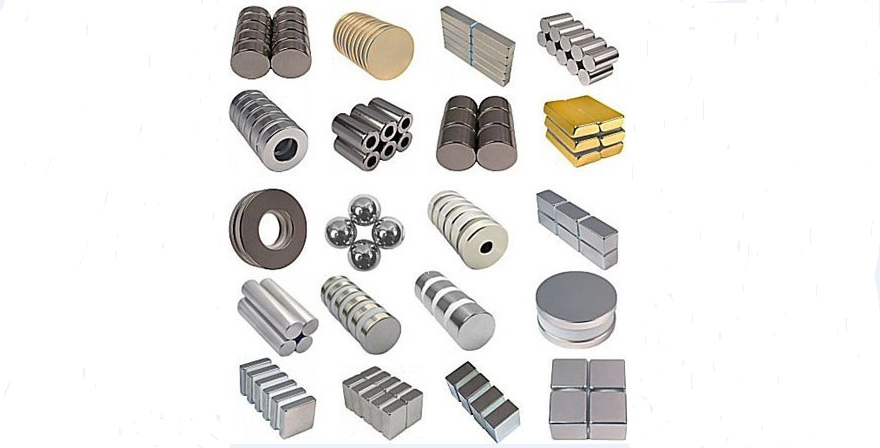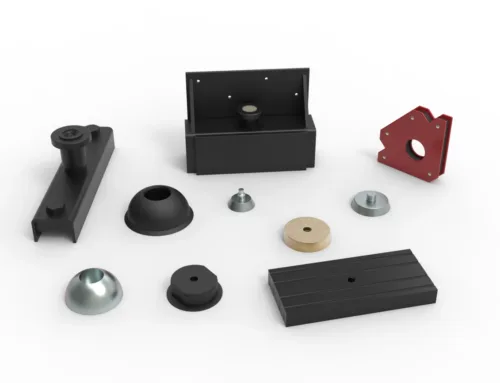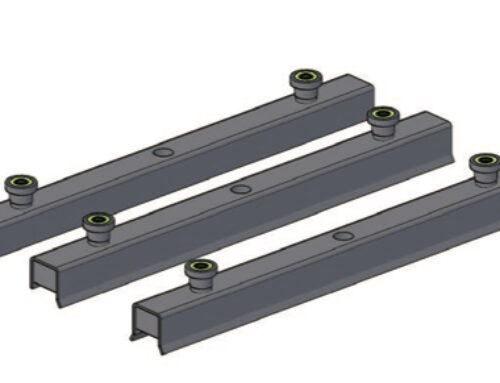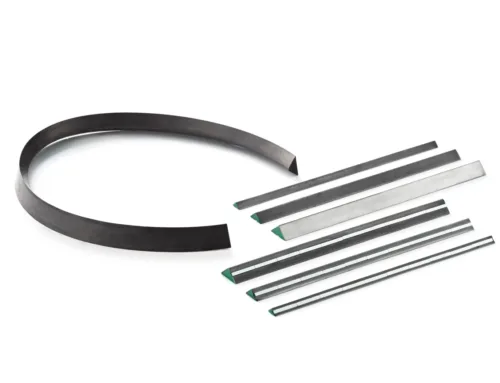Understanding Magnetic Strength Key Concepts
When we talk about magnetic strength, we’re essentially describing how powerful a magnet’s field is and how much force it can exert. In simple terms, it’s the magnet’s ability to attract and hold onto ferrous materials. This strength is usually described using two main measurements:
- Magnetic Flux Density (Gauss or Tesla) – Measures the density of magnetic field lines passing through a material.
- Pull Force (Newtons or pounds) – Indicates how much physical force is needed to detach a magnet from a steel surface.
For example, a neodymium magnet with a flux density of 1.4 Tesla can generate strong attractive force even if it’s physically small.
Factors that influence a magnet’s strength include:
- Material Type – Permanent magnets like neodymium (NdFeB), samarium cobalt (SmCo), alnico, and ceramic (ferrite) differ in maximum achievable strength.
- Magnet Grade – Common neodymium grades range from N35 to N54; the higher the number, the stronger the magnet for a given size.
- Size and Shape – Larger surface area or certain shapes (like blocks or discs) can focus magnetic force more effectively.
- Temperature Resistance – Some magnets lose strength when exposed to high heat; specialized grades maintain performance up to 300°C.
Magnet grades are a shorthand for their maximum energy product, measured in Mega Gauss Oersted (MGOe). For example:
- N35 – Good general-purpose strength
- N42 – Higher pull force for similar size
- N52 – Near the top of commercially available neodymium strength
Understanding these concepts is key before comparing magnets, as strength isn’t just about raw power — it’s about matching the right magnet to the application.
Types of Magnets Ranked by Strength
When we talk about magnetic strength, we’re usually comparing permanent magnets since they hold their magnetism over time without an external power source. Here’s how the most common types stack up in strength and use.
Neodymium Magnets (NdFeB)
These rare earth magnets are the strongest commercially available option. Grades like N52 can produce an incredibly high pull force for their size, making them popular in industries from motors and tools to magnetic clasps. They’re powerful but can lose strength at high temperatures, so heat resistance is something to check before use. Learn more about neodymium magnets here.
Samarium Cobalt (SmCo) Magnets
SmCo magnets are also rare earth types, slightly weaker than neodymium, but with much better temperature resistance and corrosion resistance. You’ll often see them in aerospace, defense, and high-heat equipment where stability is more important than maximum strength.
Alnico Magnets
Made from aluminum, nickel, and cobalt, Alnico magnets aren’t as strong as rare earth options, but they handle extreme temperatures very well. They’re common in instruments, sensors, and electric motors.
Ceramic or Ferrite Magnets
These are affordable, corrosion-resistant magnets made from iron oxide and strontium or barium. They’re weaker than Alnico but perfect for applications where cost and size matter more than top-tier strength—like speakers, fridge magnets, and magnetic signage.
Temporary Magnets and Electromagnets
Temporary magnets only hold magnetism when near a strong magnetic field. Electromagnets use an electric current to create a magnetic field and can be turned on or off. These are often left out of static strength rankings because their strength depends on external power, but they’re very relevant for industrial and lifting applications.
Comprehensive List Magnets by Strength

Here’s a quick comparison of the most common magnet types and grades you’ll find in the U.S. market. This list makes it easier to match a magnet’s strength, size, and temperature rating to your specific job or product use.
| Magnet Type | Grade | Max Energy Product (MGOe) | Typical Pull Force* (N) | Max Operating Temp (°F) | Common Uses |
|---|---|---|---|---|---|
| Neodymium (NdFeB) | N35 | 35 | ~100–120 | 176 | Consumer electronics, tools, magnetic hooks |
| N42 | 42 | ~130–160 | 176 | Motors, audio devices, crafts | |
| N52 | 52 | ~180–200 | 176 | Hobby projects, magnetic clamps | |
| Samarium Cobalt (SmCo) | 2:17 | 26–33 | ~80–120 | 572 | Aerospace, high-temp motors |
| Alnico | 5 | 5–9 | ~20–40 | 1000+ | Sensors, guitar pickups, instruments |
| Ceramic (Ferrite) | C8 | 3–4 | ~10–30 | 482 | Speakers, refrigerator magnets, signage |
Notes:
- *Pull force values shown are based on a 1″ diameter, 1/4″ thick disc touching a flat steel surface.
- “Max energy product” (MGOe) is a way to rate the raw magnetic strength of the material.
- Stronger magnets like high-grade neodymium offer more force in smaller sizes, but often have lower temperature tolerance compared to SmCo or Alnico.
How to Choose the Right Magnet Based on Strength and Application
Choosing the right magnet isn’t just about picking the strongest one you can find. You need to think about pull force, size, shape, temperature resistance, and material type to match your exact application. Here’s a quick breakdown to make that choice easier.
Understand Your Project Needs
- Pull Force vs. Size – If your design has limited space, you may need a stronger magnet like a neodymium grade N52 even in a small size.
- Temperature – High heat can weaken magnetic strength. For applications like motors or generators, Samarium Cobalt is better at high temps than most neodymium types (see high-temperature magnet guide).
- Durability – Outdoor or wet environments often need magnets with strong coatings or rust resistance.
Match Material and Grade to Application
| Application Type | Recommended Material | Strength Level | Notes |
|---|---|---|---|
| Heavy Industrial | Neodymium N50–N54 | Very High | Compact, powerful, ideal for limited spaces |
| High Temp Equipment | Samarium Cobalt (SmCo) | High | Handles up to ~350°C |
| Everyday Household | Ceramic Ferrite | Medium | Affordable, corrosion-resistant |
| Hobby/DIY | Alnico or Small Neodymium | Medium–High | Easy to work with, customizable shapes |
Factor In Cost
- Higher grades like N54 or custom-shaped magnets cost more.
- SmCo is pricier than neodymium but can be the right investment for high-temp jobs.
- Ferrite magnets are the most budget-friendly but much weaker.
Safety Tips for Strong Magnets
- Keep fingers clear when magnets snap together to avoid pinching injuries.
- Store away from electronics and pacemakers.
- Wear gloves and eye protection when handling large neodymium magnets.
- Use spacers to separate large magnets during shipping or storage.
If you’re comparing neodymium vs ceramic magnets, check this magnet comparison guide for more detail on their strengths and best uses.
NBAEMs Magnet Solutions Quality and Strength You Can Trust
At NBAEM, magnetic strength isn’t just a spec on paper—it’s built into every product we manufacture. We offer a full range of magnets, from high-grade neodymium options (up to N54 for maximum pull force) to reliable ferrite and samarium cobalt magnets for high-heat environments. Our products cover small hobby use all the way to heavy-duty industrial applications where performance can’t fail.
Why Choose NBAEM
- Quality Certifications – ISO-certified production ensures consistent strength, precision, and durability.
- In-House R&D – Our engineering team develops custom magnet grades and coatings to meet specialized needs.
- Custom Manufacturing – We design magnets to exact shapes, pull force targets, and operating environments.
Examples of Strength-Critical Applications
- Wind Turbines – High-energy neodymium magnets for efficiency in large-scale renewable energy systems.
- Medical Devices – Precision magnets designed for safe, reliable performance.
- Automotive Motors – Heat-resistant samarium cobalt magnets for electric and hybrid vehicles.
- Industrial Lifting Equipment – Extra-strong magnets to handle heavy loads safely and repeatedly.
Whether you need small precision magnets or the strongest industrial-grade options on the market, NBAEM delivers strength, reliability, and performance you can measure.
FAQs About Magnet Strength
Why do different magnets have different strengths
Magnet strength mainly comes down to material type, grade, and size. Neodymium magnets are generally the strongest permanent magnets, while ceramic (ferrite) magnets are weaker but more affordable. The grade (like N35, N52) also plays a big role — higher grades pack more magnetic energy in the same size. Shape and how the magnet is magnetized also affect overall strength.
Can magnet strength be affected by temperature
Yes. High heat can cause magnets to lose strength — sometimes permanently. Each magnet type has a maximum operating temperature. For example, standard neodymium magnets start losing performance around 176°F, while samarium cobalt can handle much higher temps without degrading. Cold temperatures usually don’t cause lasting damage, but extremely low temps can make magnets brittle.
If you need magnets for high-heat uses, you can check out high temperature magnets.
How to measure the pull force of a magnet
Pull force is how much weight a magnet can lift directly off a flat steel surface. You can measure it with a spring scale or digital pull force gauge. Always test under standard conditions — flat, clean steel, full surface contact — to get accurate numbers. Manufacturers usually list pull force based on these ideal settings.
Are stronger magnets always better for all applications
Not always. A stronger magnet isn’t the best choice if:
- Your application needs high temperature resistance more than raw strength
- You’re working with electronics — too much magnetic field can cause interference
- You need easy handling — powerful magnets can be dangerous without precautions
- Cost is a factor — high-grade neodymium magnets are more expensive
For example, in wind turbines, magnet choice balances strength, durability, and heat resistance — more on that in magnets in wind turbines.





Leave A Comment